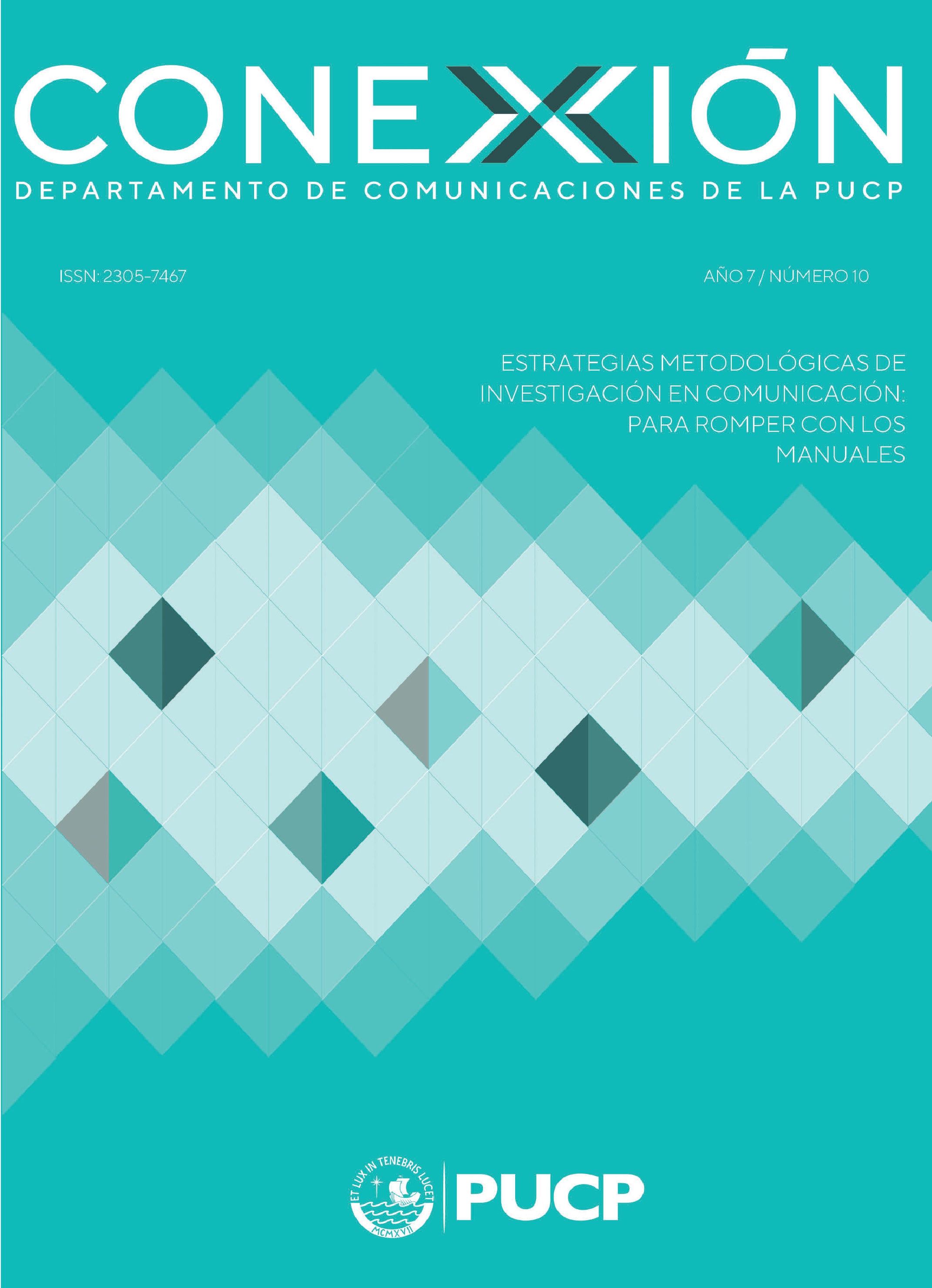Estudio de caso desde la perspectiva de la metodología mixta digital para el abordaje de la instantaneidad y solidaridad en el uso de WhatsApp durante el sismo 19S, en la Ciudad de México
DOI:
https://doi.org/10.18800/conexion.201802.003Palabras clave:
Teléfonos celulares, WhatsApp, metodología mixta y digital, sismos, solidaridad, MéxicoResumen
Esta investigación se ubica en el contexto de los debates actuales relacionados con el diseño y aplicación de una propuesta metodológica mixta digital para el estudio de la construcción de solidaridad en el Sismo del 19 de septiembre de 2017, en la Ciudad de México. El estudio se llevó a cabo en cuatro grupos de usuarios con distintos niveles de afectación y se evaluó el rol que jugó el uso del celular y la aplicación de mensajería instantánea WhatsApp en dos niveles: primero, en la construcción de la solidaridad durante las etapas del sismo y del post-sismo por los usuarios de esta aplicación y, segundo, en el uso del teléfono celular y la aplicación de mensajería instantánea WhatsApp como un campo de estudio, un método digital y una herramienta heurística de recolección de datos dentro de un enfoque de investigación-acción en situaciones de desastres naturales, emergencias, crisis y, particularmente, sismos.
Descargas
Publicado
Cómo citar
Número
Sección
Licencia
Derechos de autor 2018 Conexión

Esta obra está bajo una licencia internacional Creative Commons Atribución 4.0.














